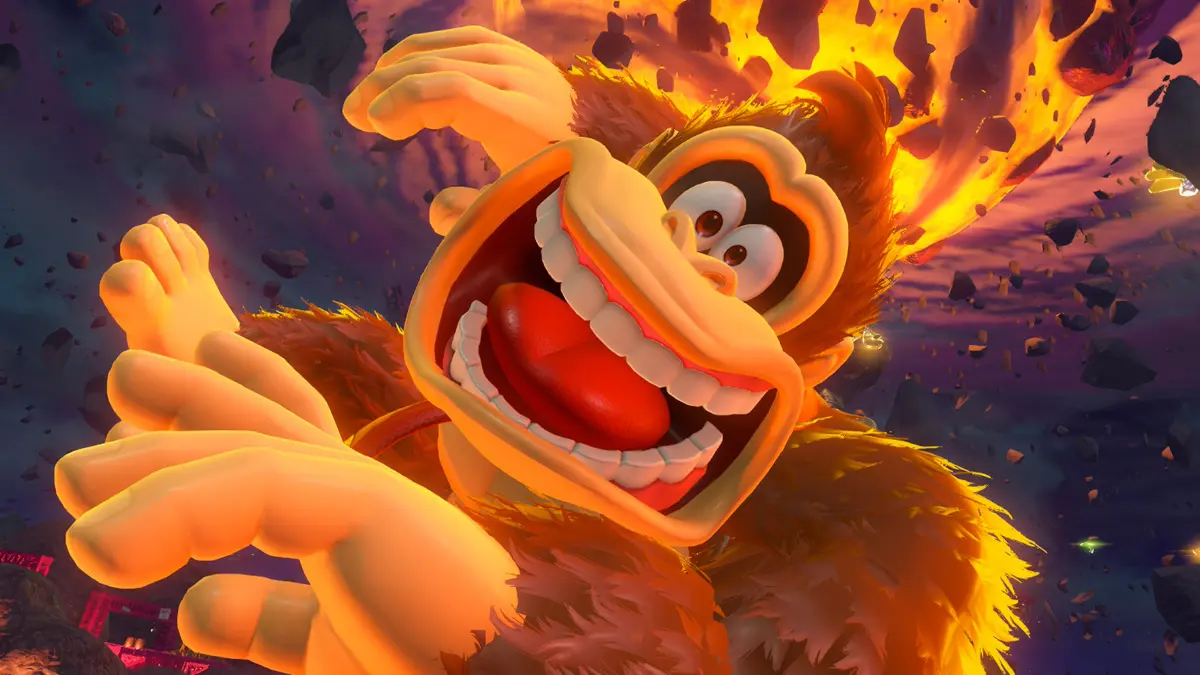The second big Switch 2 exclusive is here, and unlike Mario Kart World, Nintendo was actually sending review copies of Donkey Kong Bananza to the media. Not to us, mind you, but you know, the media.
So, here’s a slightly late Donkey Kong Bananza review, based on the impressions of someone who played it like a normal person instead of racing the embargo clock.
Donkey Kong’s facelift
Platformers are Nintendo’s bread and butter, but when it comes to Donkey Kong, the series has had almost as many externally developed games as in-house ones. Even DK’s iconic look was crafted by Rare back in the ‘90s, and there was some fan pushback when Donkey Kong Bananza was unveiled, confirming Nintendo gave its famous gorilla a facelift.
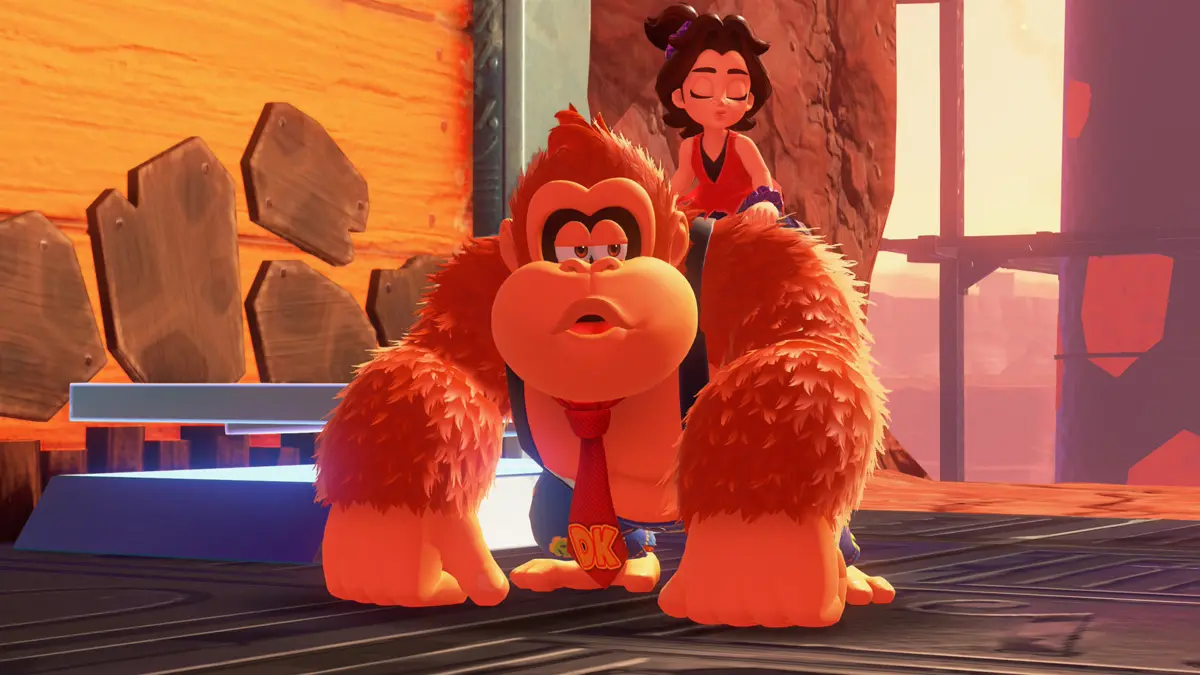
The new DK is less menacing and a bit rounder, giving him a cuter look. It felt a little off to me before the game launched, but about an hour in, I’d completely forgotten about it. The design fits Donkey Kong Bananza well, lending itself to smooth animation and making DK goofily expressive in ways that match the game’s playful tone.
A new standard for platformers
When it comes to 3D platformers, Nintendo loves to build them around a single gameplay concept. Super Mario Odyssey had Cappy, Yoshi’s Crafted World had multiple perspectives, and most Kirby games have that whole copy-ability thing going for them.
In the case of Donkey Kong Bananza, the core concept is smashing. You can destroy almost anything: dirt, rocks, trees, enemies—you name it, Donkey Kong will pulverize it with the press of a button. And thanks to his size, even just running into things or dropping onto them can leave a mark.
The destruction system even takes hardness and some other qualities into account: throw a rock into dirt and it’ll destroy it, but do it the other way around and you’ll start building a dirt bridge. An ice block can’t smash obsidian, but it can extinguish magma. These sorts of interactions lend themselves to a bunch of “aha” moments that keep you engaged as you explore.
A never-ending source of positive feedback
Even if the game didn’t go to great lengths to present challenges using this concept, I’d still want to smash everything because it’s just ridiculously fun. Almost every button you press, every move you make ends with something exploding, and nearly every explosion yields a gold chunk, coin, fossil, treasure chest, or another collectible.
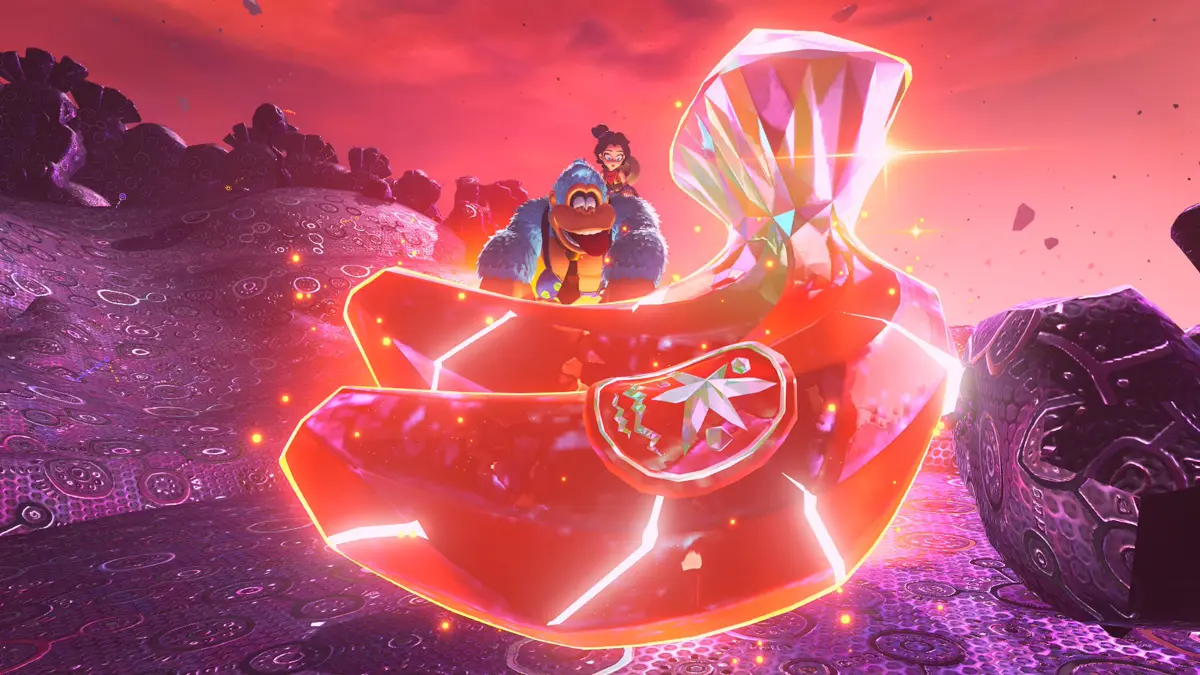
Every time you pick up anything, you hear a satisfying “ka-ching” or another audio cue reinforcing that you just did good. The game can essentially be viewed as a long sequence of these super-short positive feedback loops, which make it incredibly fulfilling and difficult to put down due to how gratifying doing anything feels.
The main collectible, Banandium Gems, is a perfect example. Crack one open and you’ll be acknowledged with that signature “OH, BANANA” vocal that wouldn’t sound out of place in Yello’s “Oh Yeah.” While I still kind of prefer the Donkey Kong 64 version, the new cue does its job of hyping you up admirably.
Really, you don’t need to do much to find joy here: just running through walls like a maniac is stupid fun. And boy, does this game have a lot of walls.
One of the cleverest collect-a-thons to date
Collecting stuff isn’t just fun but genuinely useful, since every collectible ties into some kind of unlockable. Bananas earn you skill points, coins let you buy consumables and mini resting spots, and stage-specific finds like fossils unlock costumes for that level. Even better, most of these cosmetics come with secondary stat boosts, so you’re getting both style and substance.
Since everything that you collect can be spent on fun and useful things, Donkey Kong Bananza does a better job than most collect-a-thons at motivating you to actually collect everything in sight.
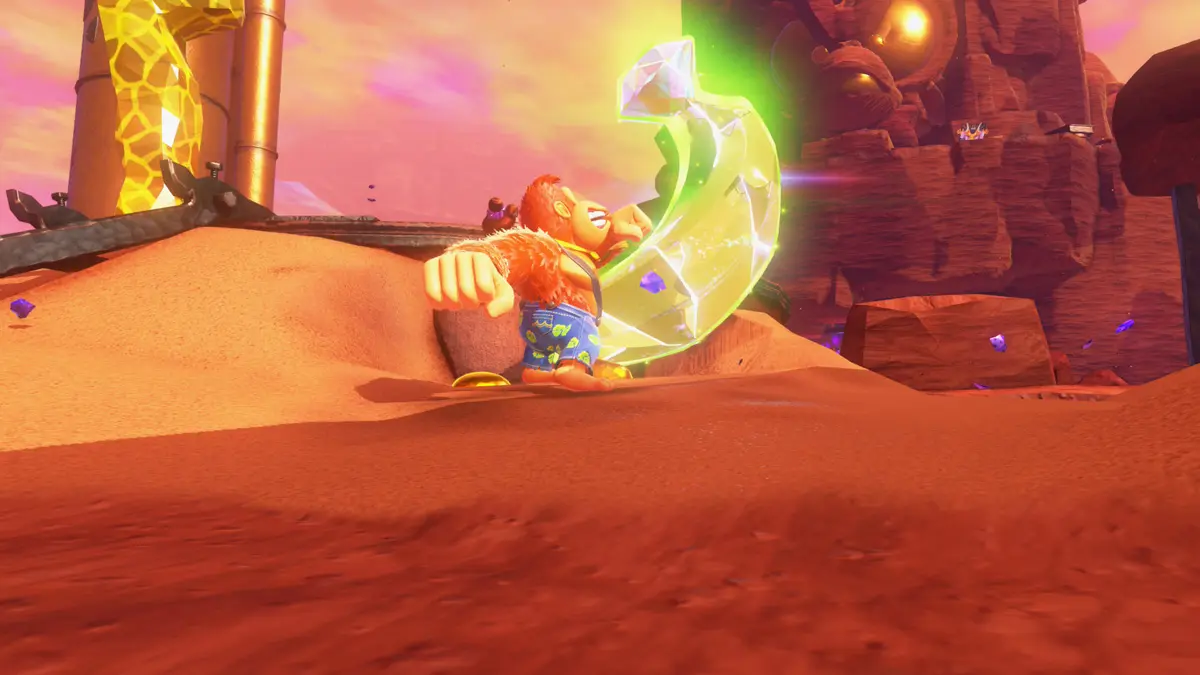
On a related note, another one of the game’s standout features is the way discovery is handled. For one, there’s the radar-like ability that’s activated every time DK claps his hands. This can even be upgraded with increased range, and it gives both visual and audio cues.
In a less clever game, spamming the radar could get annoying fast. But in Bananza, it works because the radar is just a side effect of the clap: the main purpose is to scoop up everything nearby. Since there’s always a ton to collect and all of it has immediate value, clapping around never feels tedious. If anything, you want to keep doing it for all those ka-ching dopamine hits.
When all else fails, DK can find out where collectibles are hidden by obtaining their maps. Up to a certain point, maps can be bought from a vendor found on every stage. However, simply smashing up terrain has a chance to spawn a treasure chest, which itself will sometimes drop a map.
The ingenuity of this system is that it turns Donkey Kong Bananza into a game you don’t need a guide for. Not even to 100% it. Just keep playing and even if you stop stumbling on things organically, the treasure chest maps will make sure the discoveries keep coming at a steady pace. For a game with hundreds of collectibles, that’s an amazing achievement.
Sandbox gameplay with depth
Another clever aspect of Donkey Kong Bananza is its open level design. As with most platformers, you’ll spend a lot of time figuring out how to get from point A to point B. Here, however, most traversal problems will have at least a couple of potential solutions.
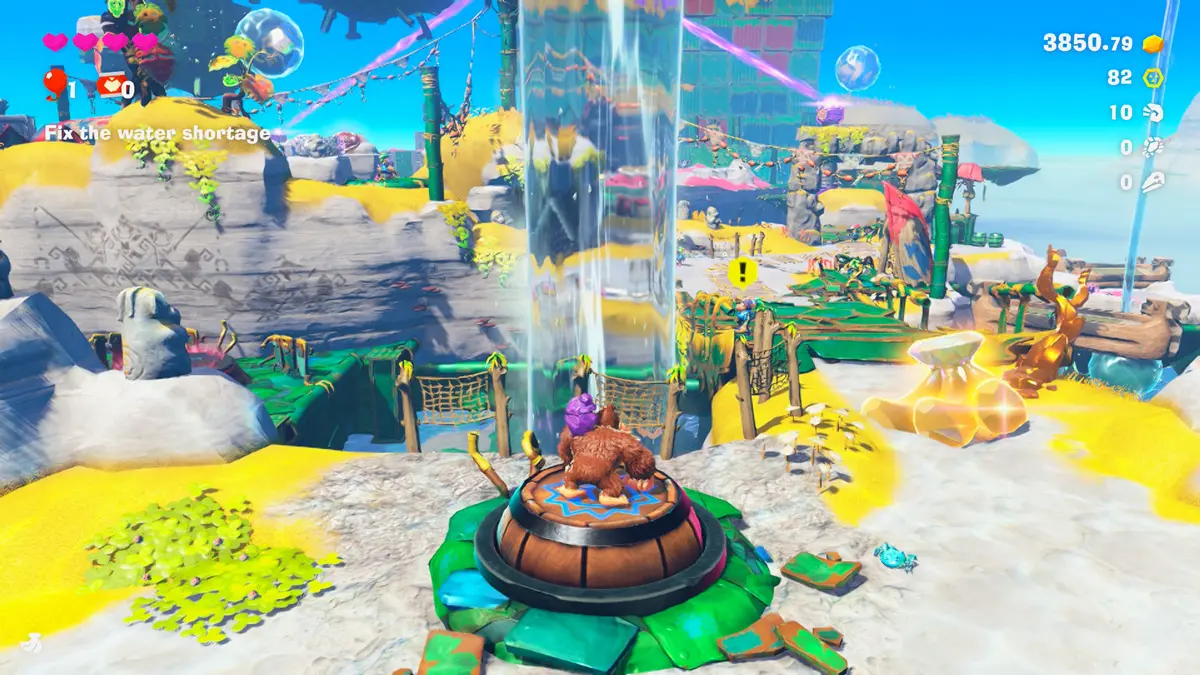
The platforming puzzles aren’t quite as intricate as the shrines in Tears of the Kingdom, but the freedom to tackle objectives from different angles—dig your way up, glide down, or even build a bridge, for example—makes Bananza a blast for players who love to experiment.
Combat isn’t quite as open-ended, not because you lack options, but because most enemies are so squishy that fights are over almost immediately. That said, the enemy variety is strong enough to keep things from feeling repetitive. Long-time fans might find it too easy, but kids are going to have a great time.
Bananzas, DK’s special abilities that let him transform into various animals, add depth to both platforming and combat. While some fights and levels are clearly designed with certain abilities in mind, quite a few obstacles can be brute-forced using multiple Bananzas. For example, you can return to one of the earlier stages once you get the ability to glide and just fly past entire sections that gave you trouble before.

The gameplay loop itself is simple and addictive: you reach a new depth layer, meet some of its inhabitants and hear about their problems, then gradually solve them through platforming and combat before facing a boss. Each new stage introduces unique challenges and (usually) mechanics, making for a varied experience.
Overall, the gameplay is top-notch, to the point I dare say it sets a new standard for platformers. I enjoyed Super Mario Odyssey tremendously, but I find Donkey Kong Bananza superior in nearly every respect: platforming, exploration, combat, collectibles, you name it.
Another praiseworthy aspect is Donkey Kong Bananza’s plot. For once, Nintendo surprisingly delivered a game whose story doesn’t feel like an afterthought. Instead, it’s told effectively, with minimal repetition and many memorable characters. Chief among those is Pauline, DK’s little helper who comes across as precious and affable from the moment you meet her.
AAA graphics and performance
In terms of production values, Donkey Kong Bananza looks and sounds like you’d expect from a AAA platformer. Special shoutout for its 5.1 surround support, which is still a rarity on Nintendo platforms and not even Mario Kart World did it right.
Much like its world, Donkey Kong Bananza’s soundtrack is varied and high-effort. The game has over 100 tracks, which you can even collect and play at your leisure in encampments.
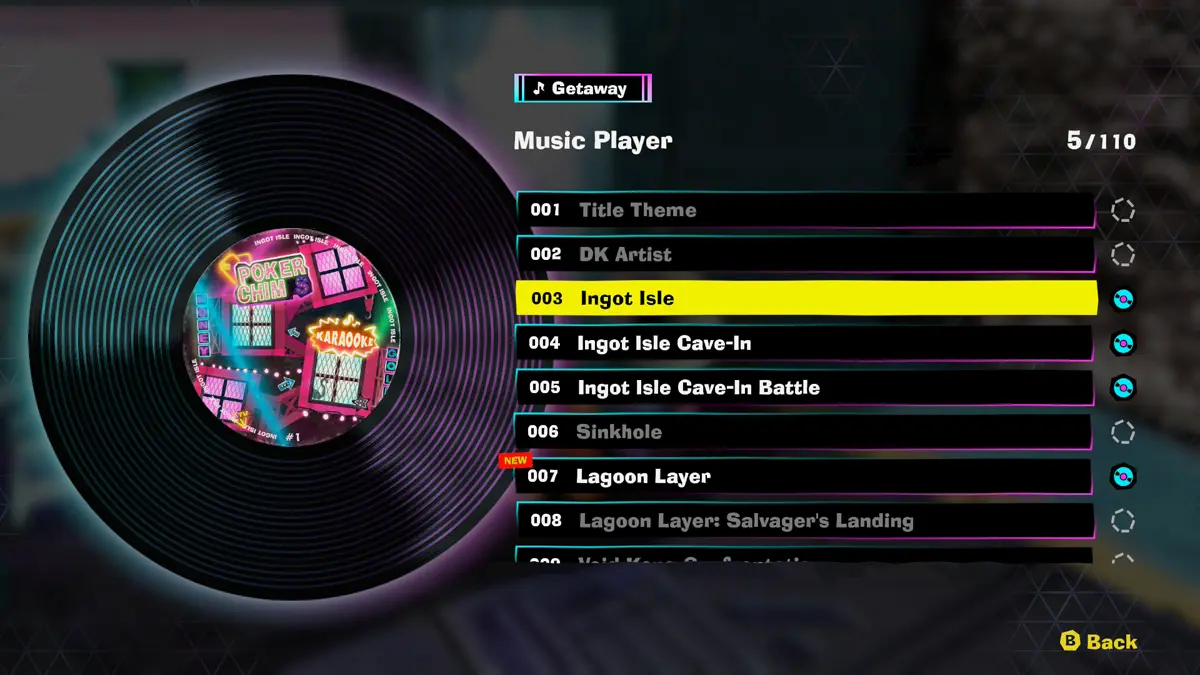
Performance-wise, Bananza targets 60 frames per second and hits that mark most of the time, delivering a buttery smooth experience. When problems start, however, they are blatant.
Boss fights in particular tend to cause frame rate issues, and even if you’re not the sort of player who’s bothered by 30fps, trust me that you’ll feel the jank when your frame rate suddenly gets halved due to a bunch of explosions happening on screen.
I found the frame rate to be way more stable in handheld than docked mode. This was pretty much the norm with Switch games, and the Switch 2 seems to continue the trend. The handheld resolution might be higher now, but so is the docked resolution, so the performance gap remains.
Bells, whistles, and minor nitpicks
In terms of extra features, Donkey Kong Bananza comes with a decent photo whose only big shortcoming is that it doesn’t support a free-roaming camera, instead confining you to rotating the viewing angle in a tiny radius around DK.
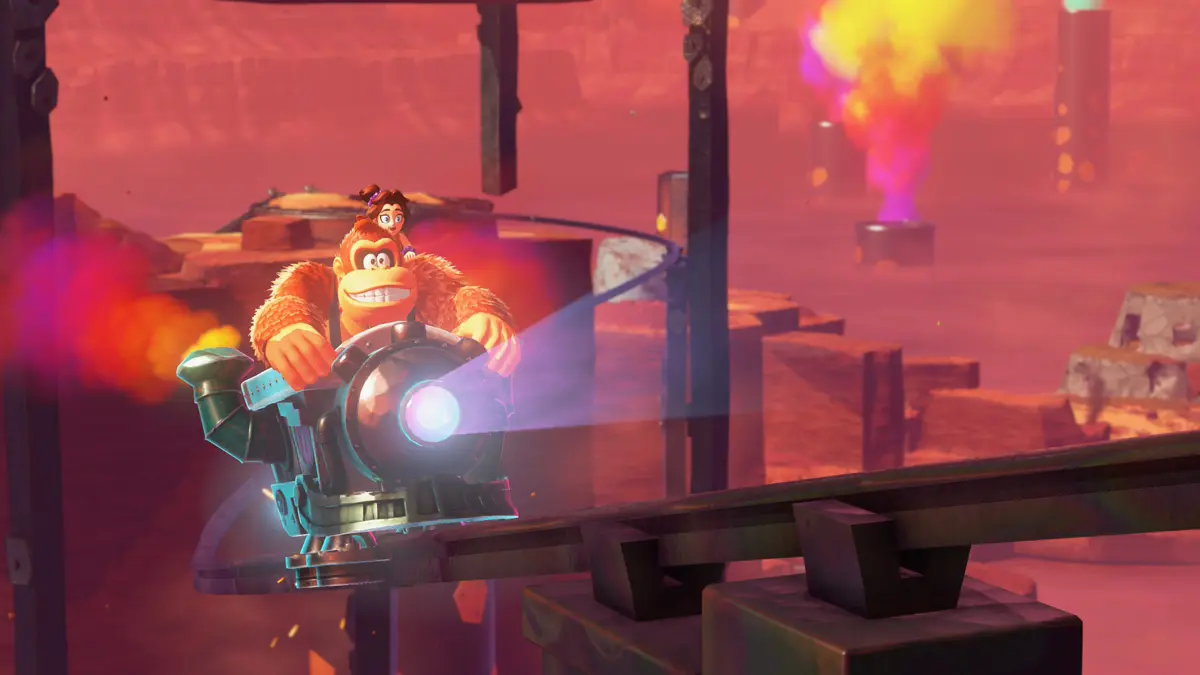
There’s also a sculpting mode, only accessible via the main menu, which is part homage to Mario Paint, part a showcase for the Switch 2 mouse controls. I found it gimmicky, same as the co-op mode, which lets one player play as DK, while another “controls” Pauline by directing her vocal blasts. Still, both are easy enough to ignore.
Other minor nitpicks that come to mind are a chaotic map that’s occasionally difficult to parse and a sometimes erratic camera. The camera can struggle when you’re blasting through terrain, particularly in vertical sections, often flipping between awkward angles that make it tough to see what’s going on.
The game also feels a bit too hand-holdy at times, and you can’t tell it to chill. For instance, there’s a cool system that lets you whistle to figure out the way to your next objective, but after a second of doing so, the game immediately starts spawning waypoints all over the screen. The whistling effect alone works completely fine, but it’s like the designers had no confidence in it.
The single-player exclusive we’ve been waiting for
None of the above really takes away from the overall experience much. At its core, Donkey Kong Bananza is an incredibly fun game that demonstrates Nintendo’s mastery of the platformer genre. It’s hilarious, dense, and constantly rewarding, delivering an addictive collect-a-thon with more brain than it lets on and more bananas than any normal ecosystem should support.
If you already bought a Switch 2 but Mario Kart World left you disappointed with its single player content, this is the game you’ve been waiting for: a GOTY candidate-level platformer with rarely a dull moment and a near-constant stream of satisfying feedback.
Bananza succeeds not just as a showcase for DK’s triumphant return, but as one of the best 3D platformers Nintendo has made in years.
